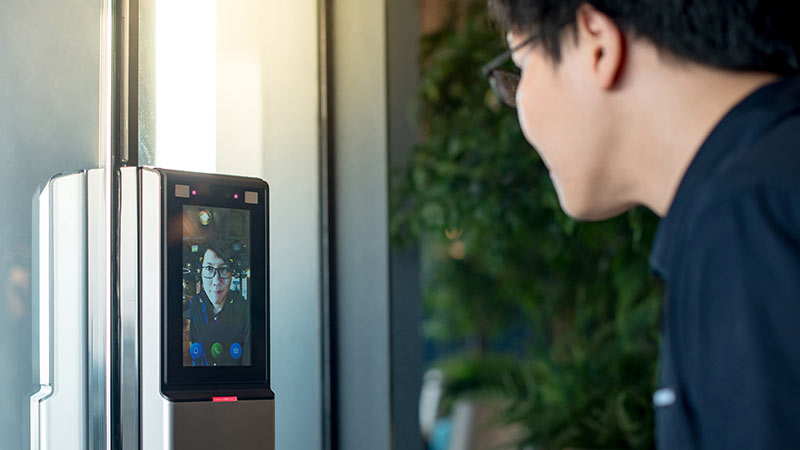
Business Corporation is a large multinational company with multiple office locations worldwide. Concerned about the security of their premises and the need for a modern, contactless access control system, they decided to implement facial recognition door access technology. This case study highlights the significance of facial recognition door access in improving security measures at one of their major office locations.
The Challenge:
Business Corporation faced several security challenges, including the risk of unauthorized access, the need for more precise access control, and the management of multiple access points within their facilities. Traditional access methods like keycards and PINs were proving to be less effective, with concerns about lost cards and unauthorized access attempts.
The Solution:
After thorough research, business Corporation decided to invest in facial recognition door access systems for one of their primary office buildings. They partnered with a reputable security technology provider to implement the solution. The system included the following components:
- Facial Recognition Cameras: High-resolution cameras equipped with facial recognition technology were strategically placed at all access points.
- Database Management: The system was integrated with a database of authorized personnel, and access permissions were customized for different areas within the building.
- Multi-Factor Authentication: To enhance security, a multi-factor authentication approach was adopted, combining facial recognition with a PIN for further verification.
- Real-Time Monitoring: The system provided real-time monitoring of access points, and alerts were set up to notify security personnel of any unauthorized access attempts.
Results and Benefits:
- Improved Security: The facial recognition system significantly enhanced security by accurately identifying authorized individuals and preventing unauthorized access.
- Contactless Access: The contactless nature of facial recognition was especially valuable during the COVID-19 pandemic, as it minimized physical contact at access points.
- Custom Access Permissions: Different areas within the office building had specific access permissions. This allowed for a fine-tuned control of who could enter various sections of the facility.
- Time and Attendance Tracking: The system doubled as a time and attendance tracking solution, streamlining the HR processes and improving efficiency.
- Deterrence to Unauthorized Entry: The visible presence of the facial recognition system acted as a deterrent to potential intruders, reducing the likelihood of unauthorized access attempts.
- Scalability: The system was easily scalable, and business Corporation decided to implement it in other office locations as well.
Conclusion:
The implementation of facial recognition door accesstechnology at one of their major office locations significantly improved the security measures for business Corporation. With accurate identification, customization, and real-time monitoring, the system provided a comprehensive solution to their security challenges. The success of this implementation prompted business Corporation to consider the wider adoption of facial recognition access control across their various facilities, strengthening their overall security posture.







